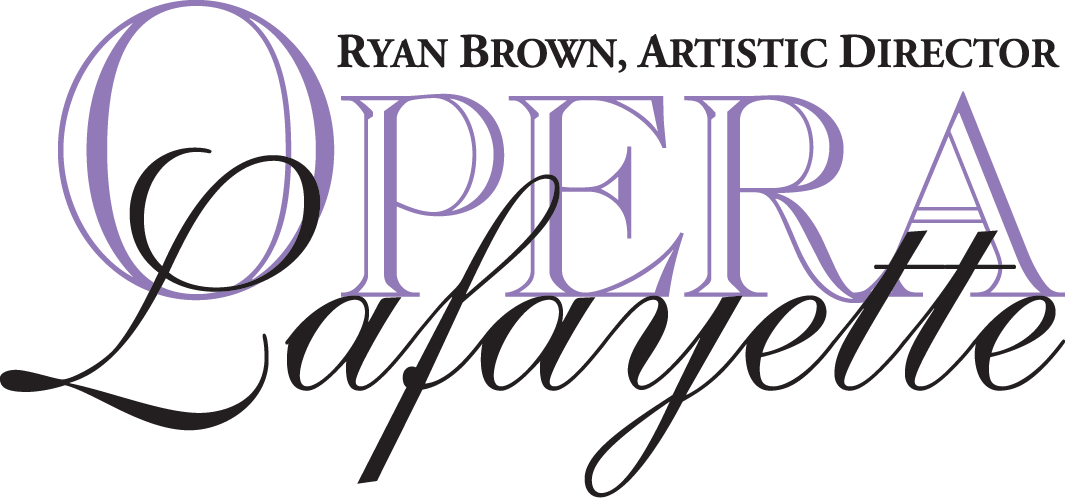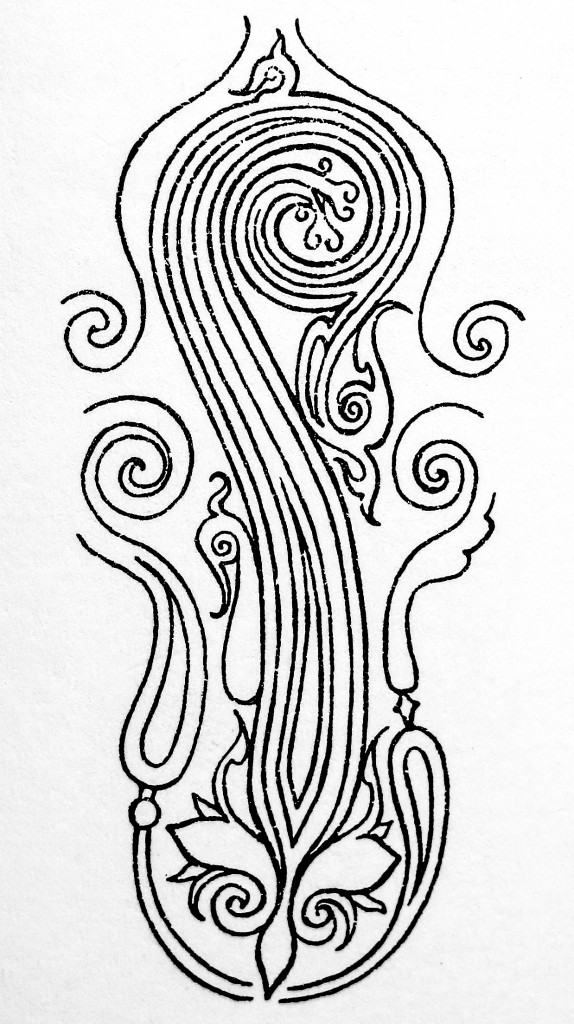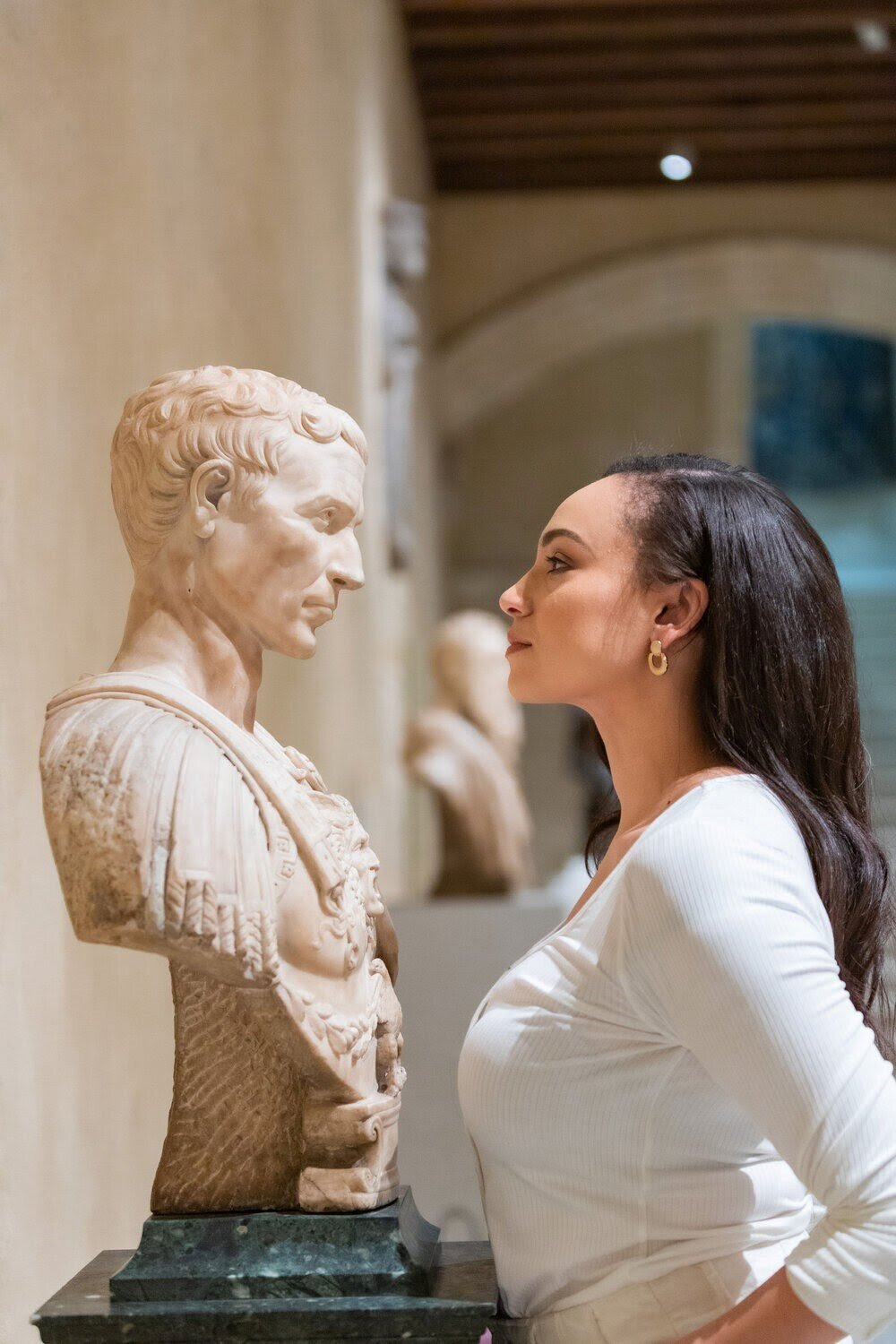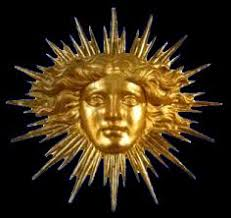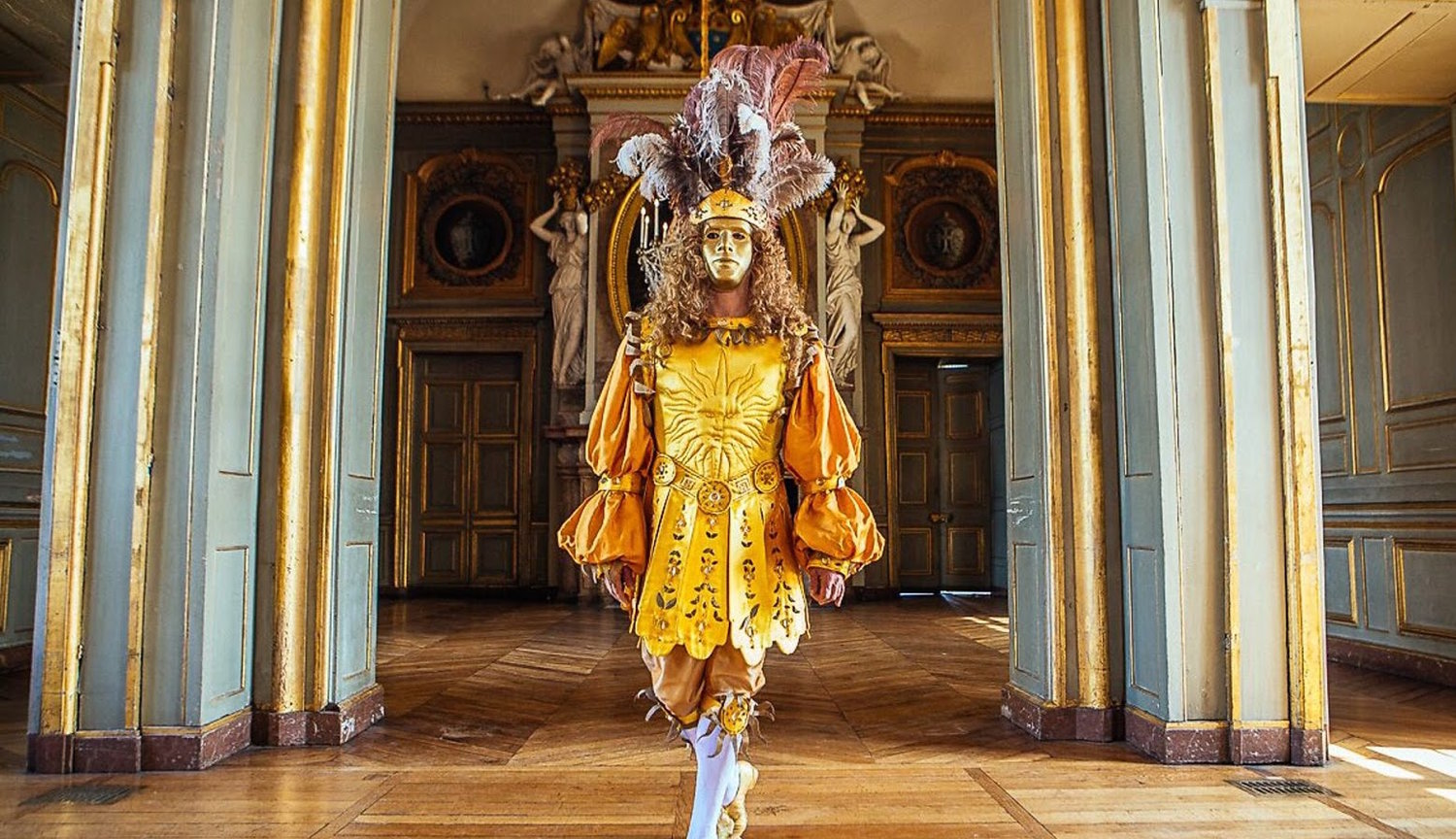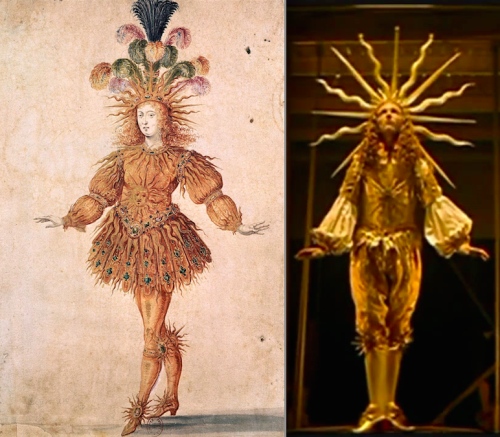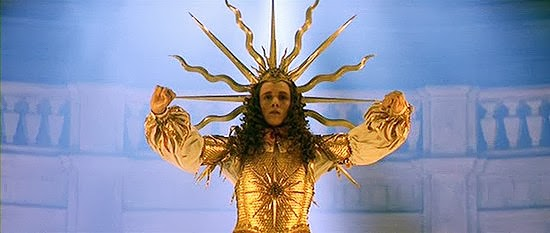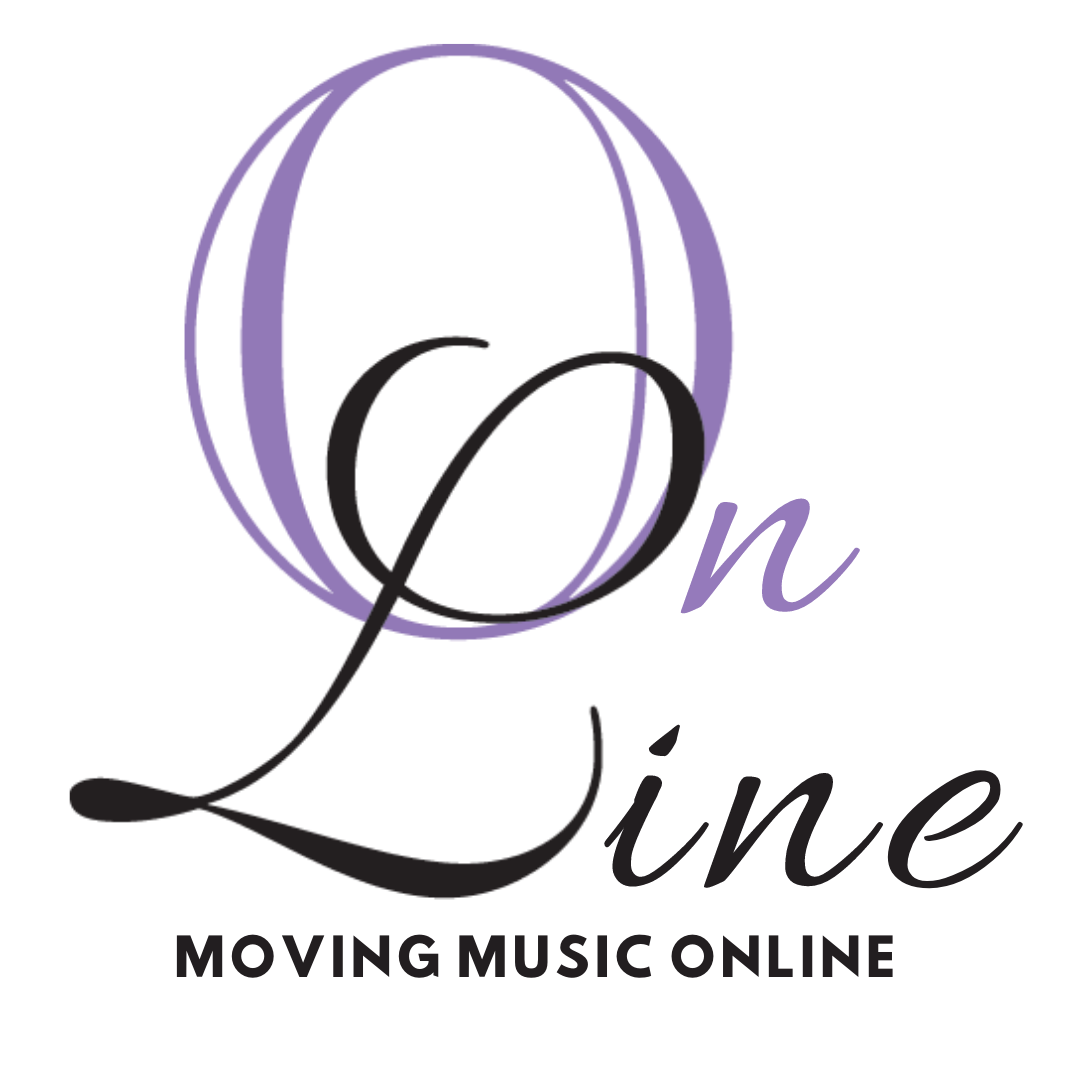AT-HOME ACTIVITIES FROM SESSION 3
Session 3: August
WEEK 1 - August 12 (Zing! Zing! Zing! Violin!)
WEEK 2 - August 19 (I Love to Sing!)
Explore At-Home Activities from Past Sessions
SESSION 3: AUGUST
PLAY ON! WEEK 3 (AUGUST 26)
This week, our focus was on dance as an expressive form within opera. We met Ritika and Ramya from Kalanidhi Dance Company, directed by Anuradha Nehru. Kalanidhi performed in Opera Lafayette’s production of Lalla Roukh in 2013 and Les Fetes d’Hymen in 2015. Ritika and Ramya demonstrated some Kuchipudi dance steps seen in these productions and we learned some of the ritual and meaning around this classical Indian dance form. Here are some bonus materials and new activities to keep you exploring through your week.
“[Dance is a] very powerful way to communicate and connect… You are connecting with the dance, you are connecting through the dance, you are connecting to the emotions that come out from you while you are dancing.”
About Kuchipudi Dance and Kalanidhi Dance Company on their website
Kalanidhi Dance Videos on YouTube
Why I Dance Video: In this short video, Anuradha Nehru, the founder of Kalanidhi Dance, speaks a bit about what motivates her to dance. It gives a quick glimpse into the more traditional aspects of Kuchipudi education and performance.
See more on Kalanidhi:
Instagram: @kalanidhidance
Facebook: @kalanidhidance
LALLA ROUKH
Kalanidhi performed in Opera Lafayette’s production of Lalla Roukh in 2013.
Kalanidhi dancers performing in Lalla Roukh with Opera Lafayette. They are playing the part of dancers in Kashmir entertaining the Princess as she travels through their land.
Lalla Roukh performed by Opera Lafayette
“Sous le feuillage sombre” from Lalla Roukh, performed by South Asian Symphony Orchestra
DANCE AND EMOTION
In Indian classical dance, performers learn how to express the 9 Rasas..
Rasa can mean mood or emotion, and nine have been identified in Hindu belief as the foundation from which all other human emotions emerge. In Rasa, these nine emotions unfold in a harmonious blend of traditional and contemporary movement.
According to Indian classical dance aesthetics, these nine emotions or expressions of life are:
Love
Happiness
Fear
Sorrow
Disgust
Wonder
Anger
Courage
Peace
Go through this list and express each Rasa using your face.
Now try using your whole body.
How can you make each one bigger, more intense? How about softer, more subtle?
With a partner, see if you can get them to guess which Rasa you are performing
What about mixing two Rasas together?
Here is the Kalanidhi Dance Company performing the Navarasa, the 9 Rasas. Contextualized within nice narrative episodes from the epic Ramayana, each emotion is elaborated through music, body, and pure dance. The result is a production that seamlessly weaves together two experiences- the story of the Ramayana, and the portrayal of the moods themselves
STORY AND GEOGRAPHY
Lalla Roukh is an opera by the French composer Félicien David based on a poem by Thomas Moore.
“The heroine is a princess from Delhi who travels to Bukhara to marry its king. On a mountain pass in Kashmir she is waylaid by a silver-tongued poet with whom she falls in love. She arrives at the court determined to throw over the royal match in favor of the penniless poet, but it turns out that he was in fact the king disguised to test Lalla Roukh’s heart.”
- NYTimes on Opera Lafayette’s production in 2013
The Princess is going from Delhi, India, through Kashmir to Bukhara, Uzbekistan.
Can you trace her path on the maps below? (The red dot is Bukhara, Delhi is just next to New Delhi)
What kind of terrain might she have passed through?
What language do you think she spoke? What about the people in Kashmir? Or in Bukhara?
If they didn’t speak the same language, how else might they communicate with each other?
“Dance can communicate what words cannot because a body is so much more expressive than words sometimes. If you think music is the language of the soul, then dance is a visual expression of that.”
Kuchipudi Dance originated in Andhra Pradesh, India. Can you find this region on the map?
Hint: it’s in the south. What language is spoken there? While Kuchipudi is a classical dance of India, it is not a local dance of Kashmir. Watch a kashmiri folk dance:
MUSIC
Watch and listen to these two performances. One is by a French composer imagining Kashmir, the other is by Kashmiri musicians in Kashmir.
How do the two different pieces make you feel or move?
What kinds of instruments do you see in each?
Can you find the Kashmiri stringed instruments that are played with a bow? How about the ones that are plucked?
What European instruments do you know that are bowed? And which are plucked?
What do you notice about the kashmiri instruments?
Why do you think they are so intricately decorated?
Have you ever seen someone play a jug?
Try playing your own jug!
DESIGN
In Lalla Roukh, the Princess is traveling through Kashmir. Opera Lafayette hired an Indian fashion designer, Poonam Bhagat to design the costumes for their production. What do you think the Princess might wear in this story? If she were traveling through Kashmir, she might have worn a special local shawl, woven of wool and silk with a “paisley” design. This is actually an ancient design created long ago somewhere around present-day Iraq and Iran, where it is called “boteh” (Persian for “shrub”). European colonizers copied the pattern from shawls made in Kashmir and began mass producing them on the modern loom. It was most prolifically produced in the town of Paisley, Scotland, hence the name now commonly used for it in Europe and the west. Let’s look more closely at its evolution and origins!
These images are from Kashmir Paisley Shawl and its Enduring Contribution to the Paisley Motif.
Why do you think the Persian word for this design is boteh/shrub?
Can you find the boteh, the shrub or plant in each of these images?
Trace the outline of each one with your finger
Do you notice how the tear-drop shape evolved from the shrub?
How many blossoms are in the first image? How about the last one?
Try drawing your own boteh, or print and color, or embellish the ones here
BONUS VIDEO
This is a livestream of a full-length Kalanidhi production, which was commissioned and staged at the Kennedy Center in 2018. Bhoomi explores one of humanity's greatest challenges--climate change--through the lens of Indian philosophical thought. Framed by the portrayal of the five natural elements--space, air, fire, water, and earth--the work depicts the evolution of humanity's connection to these fundamental aspects of the earth's existence. It asks why and how have we gotten to this point, and what might we do to slow this course we have laid for ourselves?
THANK YOU FOR JOINING US!
Be sure to sign up for our Waiting List to be alerted when more sessions are announced!
PLAY ON! WEEK 2 (AUGUST 19)
This week, our focus was on breath and joy in song! We met Vanessa Aldrich, who led us in some vocal warmups and breathing exercises! She sang Verdi Prati from Handel’s Alcina. We practiced breathing and mindfulness with the music. Here are some bonus materials from Vanessa and new activities to keep you exploring through your week.
Vanessa Aldrich, lyric soprano and today’s guest artist
Handel’s Alcina, from which Vanessa sang Verdi Prati
Photo Credit: Olga Brycht
““ I love singing opera because it allows heroes, ancient kings & queens, fairies, and magical creatures to inspire me, and sing through me. Their stories make me feel strong and powerful, and it allows me to share that magic with others.”
”
MUSIC & BREATH
Vanessa is a fan of the singer Jeanine de Bique, who exemplifies a lot of the qualities we worked on in the workshop: deep breathing, connecting the body to the voice, and smiling into the music.
Here is Jeanine rehearsing a Handel piece.
Notice when she jumps up and down and laughs- how do you think this helps her?
Try your own shakeout. Shake your whole body, limbs and all.
Can you sing and shake your body at the same time? What does that do to your voice?
Can you laugh and sing at the same time? How does that feel?
Here is Jeanine de Bique doing a special stretch to sing in the mountains:
Can you do the same move she is doing? Make your body into a mountain.
How does it feel to breathe in this position?
How does it feel to sing in this position? Or when you move between shapes?
What other shapes can you make with your body?
How does it feel to breathe or sing in these different positions?
Finally, just for the pleasure of it, Jeanine de Bique rehearsing the Mozart Mass in C:
Can you see her smiling through the music?
Notice when she breathes. See if you can breathe along with her.
What do you feel as you listen and breathe?
SING WITH A SMILE
In our workshop, Vanessa showed us how to smile with each inhale, to breathe joy into every note we sing. She says:
"Singing opera forces me to breathe deeply, and connect to my internal joy, over and over again!"
You can do this too! Every day. With or without song.
Just breathe in, and smile!
Try waking up each morning with a smile.
Try taking 3 breaths before bed at night and smiling with each inhale.
Try breathing joy right now! As you breathe in, let a big smile grow in you, as you breathe out, let out a hum, a note, a little melody, or a song. Do this a few times until you feel joy bubbling up through you.
Here is Gladys Knight singing about and demonstrating the power of a smile in another musical style:
Here is “Smile” from the 1936 film, Modern Times by Charlie Chaplin, renowned silent film director and comedian. In the original, it was just a tune, the lyrics were written by John Turner and Geoffrey Parsons
Smile (sung by Nat King Cole, with clips from Charlie Chaplin films):
MAKE A MYTHIC CREATURE
The story of Alcina is full of enchanted forests, people with magic powers, and mystical creatures. There’s the sorceress Alcina, a magician, the fearless Bradamante who, dressed in full armour, repeatedly saves her beloved from all sorts of trouble, and a Griffin!
Here’s the straight story of Alcina.
There’s also a full synopsis with videos at the Kennedy Center.
A Griffin is a mythical creature made up of a bird and a lion. Can you find each of those animals in this picture of a Griffin?
What animals do you see in the imagined creatures pictured below?
What do you think they each sound like?
Can you make their voice?
What animals might you put together to create your own mythical creature?
Try making a drawing of your own mythical creature, sculpt it out of clay or pipe cleaners, or describe it in detail to a friend.
What special powers does it have from each of its animal parts?
What sounds does it make?
What does it sing about?
Sing your creature’s song.
Thanks for joining us! Be sure to register for our next session, the last one in August!
PLAY ON! WEEK 1 (AUGUST 12)
This week, our focus was on the violin! We met Leslie Nero, who introduced and played for us the baroque violin! We heard a Passacaille from Armide and a minuet by Bach. We warmed up our hands and danced to the music. Here are some additional materials to listen, watch, play, and craft!
Armide by Jean-Baptiste Lully as performed by Opera Lafayette, with Leslie Nero on violin
More on The Baroque Violin
If you are curious about the history of stringed instruments and their origins in Central Asia, see our Lesson from July 22 with Motomi Igarashi on Viola de Gamba and Lirone:
PLAY WITH YOUR HANDS
Leslie shared with us a few ways that violinists exercise and warm-up their hands to play with dexterity and care.
Here are several more hand exercises to try. See if you can do them all!
Try creating hand shadow puppets!
Use your warmed up fingers to act out the song Little Bunny FooFoo!
INSTRUMENTS - IDENTIFY & OBSERVE
Here is Leslie playing with Chatham Baroque Ensemble:
As you watch:
See if you can identify each of the instruments in the ensemble: There is a Theorbo, Harpsichord, Viola de Gamba (hint: “gamba” means “legs” in italian…), Baroque Viola, and several Baroque Violins.
How many baroque violins do you count? Remember one of them might be a Viola...
Can you find Leslie in the ensemble?
What do you notice about the instrumentalists? Who is sitting? Who is standing? Why do you think some sit and some stand?
How do they move as they play? Are they moving together?
Is there a conductor? Notice how they look to each other to stay in time.
The San Francisco Symphony has several online games for kids to learn about the instruments of the orchestra, their categories, conducting, and more. Check it out!
COUNTING THE MINUET
Leslie played a Minuet by Johan S Bach. Here is an ensemble of children, just learning the violin, playing Bach’s Minuet 3 all together
Can you count along with your hands: 1, 2, 3 - 1, 2, 3 - 1, 2, 3
On the ones clap your hands on your legs, or a table, on the two and the three you can clap them together.
If you are on your feet, try bending your knees on the one and reaching up one hand at a time on the 2 and the 3.
MASK MAKING FOR THE SUN KING
Leslie played a Passacaille from Armide, composed by Jean-Baptiste Lully. Lully was born in Italy but spent most of his life living in France as the master musician for Louis XIV. Louis believed in the power of music, dance and performance. He often performed for his court as a display of grace and power. He called himself The Sun King. Here are some photos of his emblem and costumes from the film “Le Roi Danse.”
Try making your own Sun mask or headdress! You can use any materials you have on hand: paper, feathers, pipe cleaners, cardboard, paint, glitter, glue, there is no wrong way to go about it, just have fun!
OR imagine what mask you might design for yourself as king or queen...
Thanks for joining us! Be sure to register for the rest of the sessions in August!
OPERA STARTS WITH OH! IS A VIRTUAL PROGRAM PART OF
KNOW SOMEONE WHO WOULD LOVE THIS?
Send them this link and have them register for the next class or the full series!
